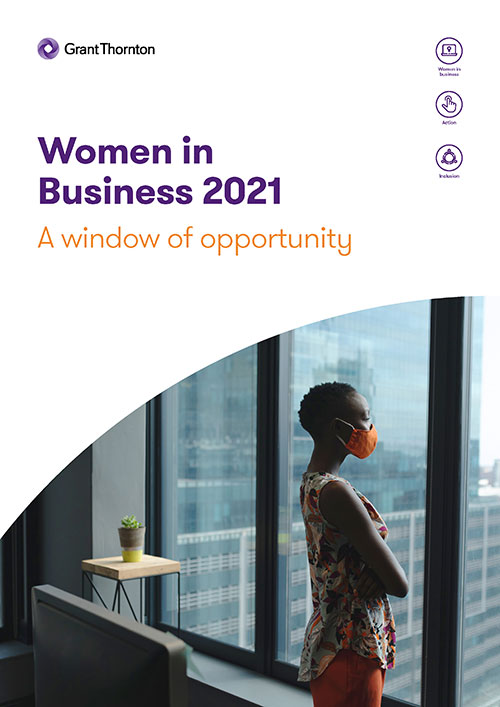-
Business valuations
We offer expert valuation advice in transactions, regulatory and administrative matters, and matters subject to dispute – valuing businesses, shares and intangible assets in a wide range of industries.
-
Capital markets
You need corporate finance specialists experienced in international capital markets on your side if you’re buying or selling financial securities.
-
Complex and international services
Our experience of multi-jurisdictional insolvencies coupled with our international reputation allows us to deliver the best possible outcome for all stakeholders.
-
Corporate insolvency
Our corporate investigation and recovery teams can help you manage insolvency situations and facilitate the best outcome.
-
Debt advisory
An optimal funding structure for your organisation presents unprecedented opportunities, but achieving this can be difficult without a trusted advisor.
-
Expert witness
Our expert witnesses analyse, interpret, summarise and present complex financial and business-related issues which are understandable and properly supported.
-
Financial models
A sound financial model will help you understand the impact of your decisions before you make them. Talk to us about our user-friendly models.
-
Forensic and investigation services
We provide investigative accounting and litigation support services for commercial, matrimonial, criminal, business valuation and insurance disputes.
-
Independent business review
Is your business viable? Will it remain viable in the future? A thorough independent business review can help your organisation answer these fundamental questions.
-
IT forensics
Effective ESI analysis is integral to the success of your business. Our IT forensics experts have the technical expertise to identify, preserve and interrogate electronic data.
-
Mergers and acquisitions
Grant Thornton provides strategic and execution support for mergers, acquisitions, sales and fundraising.
-
Raising finance
Raising finance - funders value partners who can deliver a robust financial model, a sound business strategy and rigorous planning. We can guide you through the challenges that these transactions can pose and help you build a foundation for long term success once the deal is done.
-
Relationship property services
Grant Thornton offers high quality independent advice on the many financial issues associated with relationship property from considering an individual financial issue to all aspects of a complex settlement.
-
Restructuring and turnaround
Grant Thornton’s restructuring and turnaround service capabilities include cash flow, liquidity management and forecasting; crisis and interim management; financial advisory services to companies and parties in transition and distress
-
Transaction advisory
Our depth of market knowledge will steer you through the transaction process. Grant Thornton’s dynamic teams offer range of financial, commercial and operational expertise.
-
Corporate tax
Grant Thornton can identify tax issues, risks and opportunities in your organisation and implement strategies to improve your bottom line.
-
Employment tax
Grant Thornton’s advisers can help you with PAYE (payroll tax), Kiwisaver, fringe benefits tax (FBT), student loans, global mobility services, international tax
-
Global mobility services
Our team can help expatriates and their employers deal with tax and employment matters both in New Zealand and overseas. With the correct planning advice, employee allowances and benefits may be structured to avoid double taxation and achieve tax savings.
-
GST
GST has the potential to become a minefield and can be expensive when it goes wrong. Our technical knowledge can help you minimise the negative impact of GST
-
International tax
International tax rules are undergoing their biggest change in a generation. Tax authorities around the world are increasingly vigilant, especially when it comes to global operations.
-
Research and Development
R&D tax incentives are often underused and misunderstood – is your business maximising opportunities for making claims?
-
Tax compliance
Our advisers help clients manage the critical issue of compliance across accountancy regulations, corporation law and tax. We also offer business and wealth advisory services, which means we can provide a seamless and tax-effective offering to our clients.
-
Transfer pricing
Tax authorities are demanding transparency in international arrangements. We businesses comply with regulations and use transfer pricing as a strategic planning tool.
-
Audit methodology
Our five step audit methodology offers a high quality service wherever you are in the world and includes planning, risk assessment, testing internal controls, substantive testing, and concluding and reporting
-
Audit technology
We apply our audit methodology with an integrated set of software tools known as the Voyager suite. Our technology has been developed to produce quality audits that are effective and efficient.
-
Financial reporting advisory
Our financial reporting advisers have the expertise to help you deal with the constantly evolving regulatory environment.
-
Business architecture
Our business architects help businesses with disruptive conditions, business expansion and competitive challenges; the deployment of your strategy is critical to success.
-
Cloud services
Our team is led by cloud business experts who tailor services to the needs of your organisation, from strategy and implementation to ongoing services assurance.
-
Internal audit
Our internal audits deliver independent assurance over key controls within your riskiest processes, proving what works and what doesn’t and recommending improvements.
-
IT advisory
Our hands on product experience, extensive functional knowledge and industry insights help clients solve complex IT and technology issues
-
IT privacy and security
IT privacy and security should support your business strategy. Our pragmatic approach focuses on reducing cyber security risks specific to your organisation
-
Organisational & cultural change
The key to sustainable and future growth is a unified organisation operating within a strong cultural context, where transparency and communication are the priority for Kaimahi, and where visible leadership means walking the talk – but where does that journey begin?
-
Payroll assurance
Our specialist payroll assurance team can conduct a review of your payroll system configuration and processes, and then help you and your team to implement any necessary recalculations.
-
PCI DSS
Our information security specialists are approved Qualified Security Assessors (QSAs) that have been qualified by the PCI Security Standards Council to independently assess merchants and service providers.
-
Process improvement
As your organisation grows in size and complexity, processes that were once enabling often become cumbersome and inefficient. To maintain growth, your business must remain flexible, agile and profitable
-
Procurement/supply chain
Procurement and supply chain inputs will often dominate your balance sheet and constantly evolve for organisations to remain competitive and meet changing customer requirements
-
Project assurance
Major programmes and projects expose you to significant financial and reputational risk throughout their life cycle. Don’t let these risks become a reality.
-
Risk management
We understand that growing companies need to establish robust internal controls, and use information technology to effectively mitigate risk.
-
Robotic process automation (RPA)
RPA is emerging as the most sophisticated form of automation used to help businesses become more agile and remain competitive in the face of today’s ongoing digital disruption.
The number of women holding senior leadership positions in mid-market businesses globally has hit 31% despite the COVID-19 pandemic affecting economies around the world, according to Grant Thornton’s latest annual Women in Business report.
Big breakthroughs
Research1 shows that 30% is the minimum representation needed to change decision making processes, so this is an important milestone particularly given the global figure stubbornly remained at 29% for the last two years, and ranged anywhere between 19% and 25% since our research began in 2004.
Further, in 2021, a significant landmark has been reached, with nine in 10 businesses worldwide having at least one woman in their senior management teams. By comparison, there has been a three-percentage-point improvement in this figure since 2020, and in 2017 that figure stood at two-thirds, with only 66% of businesses having at least one female leader.
This is certainly a continuation of the positive trend seen over the past five years, and could have a number of causes. Work by businesses on their diversity and inclusion policies is paying off, but it is also possible that the coronavirus pandemic has emphasised the importance of diverse leadership in times of crisis.
Another encouraging finding is the types of leadership roles women are occupying. Global figures reveal higher numbers of women across operational C-suite roles compared to last year, with the proportion of female CEOs up 6% to 26%, female CFOs also up 6% to 36%, and female COOs up 4% to 22%.
The impact of COVID-19
However, questions remain over the impact of the pandemic on women, particularly working mothers. UN data shows that, before COVID-19, women did three times as much unpaid housework as men, and mounting evidence indicates that the pandemic is only increasing this disparity, as well as adding the extra responsibilities of childcare and home schooling while schools are closed2.
But there has been a rapid paradigm shift over the past 12 months that will benefit women going forward. In this year’s report, 59% of respondents say that new working practices as a result of COVID-19 have increased the leadership roles that women have been able to play within their organisations, and over two-thirds (69%) of respondents agree that these new initiatives will benefit women’s career trajectories long-term.
Globally, a massive 92% of businesses say they are taking action to ensure the engagement and inclusion of their employees against the negative backdrop of the pandemic; a big part of this has been a sharp shift in attitudes towards how, where and when employees do their jobs.
Employers have become more flexible about working from home arrangements and many women have perhaps flourished in this environment given they have had to be more agile than most throughout their careers due to parental leave and juggling subsequent childcare commitments.
Leadership styles have also come under scrutiny due to the demands of the pandemic. Engagement with staff, a greater understanding of people’s personal needs and circumstances, and support for mental and emotional health have been more vital than ever. As these ‘softer’ management styles, which are traditionally perceived as more ‘female’ than ‘male’, have proved their worth, a greater appreciation of, and a greater need for, diverse leadership has emerged.
Another huge positive emerging from the research is that 90% of executives within the organisations that are taking action to improve their work culture will continue or even increase their emphasis on these actions after the pandemic. On average, across the action areas, 46% expect the emphasis to remain the same and 44% expect the emphasis to increase once the pandemic is over.
Some of these areas include instilling new working practices to better engage all employees, adapting existing learning and development programmes to the current environment and promoting more flexibility for employees.
A window of opportunity
Fantastic progress has been made since our research started 17 years ago, and while passing the 30% mark for women in senior roles globally is a mission-critical milestone for businesses, it’s not the end goal and these gains can easily be lost. If organisations want to leverage the benefits of a better gender balance, they must continue to take action to enable women to realise their ambitions.
Now more than ever, businesses need to stay focused on what is enabling women to progress to leadership positions, so that they can move forward rather than back as a result of the global pandemic.



